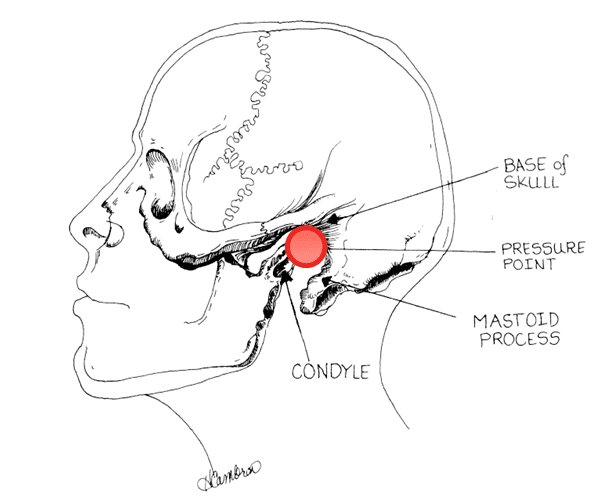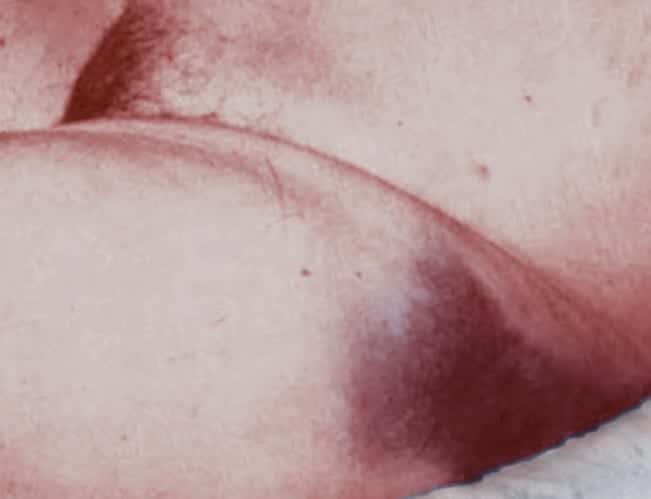Funtabulously Frivolous Friday Five 134
Just when you thought your brain could unwind on a Friday, you realise that it would rather be challenged with some good old fashioned medical trivia FFFF, introducing the Funtabulously Frivolous Friday Five 134
Question 1
You do a ketamine sedation and the patient develops laryngeal spasm. What physical manoeuvre can you preform to try and resolve the laryngeal spasm while the nursing staff draw up a paralytic?
Reveal the funtabulous answer
Larson’s point
Larson’s point or the ‘laryngospasm notch‘ [Reference]. According to Phil Larson its location is:
This notch is behind the lobule of the pinna of each ear. It is bounded anteriorly by the ascending ramus of the mandible adjacent to the condyle, posteriorly by the mastoid process of the temporal bone, and cephalad by the base of the skull.

- Larson CP Jr. Laryngospasm–the best treatment. Anesthesiology. 1998 Nov;89(5):1293-4. [Free fulltext]
- Anaesthetic Addler 001 — Nasal foreign body, ketamine and laryngospasm
- Resus.ME — Laryngospasm after Ketamine
Question 2
What is Fox’s Sign?
Reveal the funtabulous answer
Non-traumatic ecchymosis over the upper outer aspect of the thigh secondary to abdominal haemorrhage.
The ecchymosis is parallel with, but distal to the inguinal ligament with a well demarcated upper border defined by attachment of the membranous layer of the superficial fascia (Scarpa’s fascia)
Most often occurs in patients with retroperitoneal bleeding, usually due to acute haemorrhagic pancreatitis.
According to wikipedia, named after the the dermatologist George Henry Fox (1846 – 1937); however, the sign was described in 1966 by John Adrian Fox
- Eponymictionary. Fox’s sign
- Cadogan M. Atraumatic Abdominal Ecchymosis. LITFL 2018

Question 3
How did drug addicts in the 1970s and 80s help Parkinson patients?
Reveal the funtabulous answer
They discovered the effects of MPTP
Barry Kinston a 23yr old chemistry graduate was synthesising MPPP (an opiate compound) and injected himself with his concoction.
Unfortunately it had MPTP as an impurity which converts to MPP+ once across the blood brain barrier and selectively kills dopaminergic cells resulting in Parkinsonism.
Barry was treated with levodopa but died 18 months later from a cocaine overdose
The use of MPTP is used in research to produce Parkinsonism in different animal models, there was some delay in this as rats were initially modelled but they have some resistance to MPTP at lower doses, hence it was not until 6 people were poisoned in 1982 in California that further work was done on MPTP. Read the case book The Case of the Frozen Addicts by J. William Langston.
Question 4
When would you expect to hear Hammon’s sign?
Reveal the funtabulous answer
Pneumomediastinum or pneumopericardium.
Hammon’s Crunch is commonly seen in Boerhaave syndrome and is typically a crunching, rasping sound, synchronous with the heartbeat. Louis Virgil Hamman (1877-1946)
These peculiar sounds consist of crackles, bubbles or churning sounds heard with each contraction of the heart. They may be heard only during systole or during systole and diastole, but always with systolic accentuation. They may be so soft that to be heard they must be listened for attentively ; they may be so loud that they can be heard at a distance. Very often the patient himself is aware of the sounds and calls attention to them. They may be loudest over the lower portion of the sternum and to the left of the sternum or near the apex of the heart. They may be heard when the patient sits up and disappear when he lies down or be plainly heard when he lies on the left side and absent in other positions. When the presence of mediastinal emphysema is suspected the heart should be listened to carefully as the patient shifts from one position to another. The sounds are so characteristic that once having been heard thereafter their significance is unmistakable. They have been misinterpreted as the signs of pericarditis or pneumopericardium. I have the firm impression that some of the cases reported as instances of pneumopericardium were, in fact, instances of mediastinal emphysema.
Hamman LV, 1945
- Hamman LV. Spontaneous mediastinal emphysema. Bulletin of the Johns Hopkins Hospital, Baltimore, 1939, 64: 1-21.[Hamman disease/syndrome]
- Hamman LV. A Note on the Mechanism of Spontaneous Pneumothorax, Annals Internal Medicine. 13:923, 1939.
- Hamman LV. Mediastinal emphysema. JAMA. 1945;128(1):1-6.
- Harvey JC. The writings of Louis Hamman. Bulletin of the Johns Hopkins Hospital, Baltimore, 1954; 178-189
Question 5
Who drinks more coffee? Anaesthetists? Consultants or junior staff?
Reveal the funtabulous answer
On average orthopaedic surgeons purchased the most coffee per person per year (177, SD 191) followed by radiologists and general surgeons.
Anaesthetists purchased the least coffee (39, SD 48 – we wondered if they had their own machine)
Hierarchical position was positively correlated with coffee purchasing. Senior consultants (>5 years’ experience) bought most coffees per person per year and junior doctors and registrars bought fewest. Propensity of buying rounds also increased with hierarchical position, with heads of departments buying more rounds than junior doctors.
Problems with the study include only using a single site and we believe that further multi-centre studies should be performed
For the full article please click on the link: Black Medicine.

FFFF
Funtabulously Frivolous Friday Five
Dr Neil Long BMBS FACEM FRCEM FRCPC. Emergency Physician at Kelowna hospital, British Columbia. Loves the misery of alpine climbing and working in austere environments (namely tertiary trauma centres). Supporter of FOAMed, lifelong education and trying to find that elusive peak performance.
